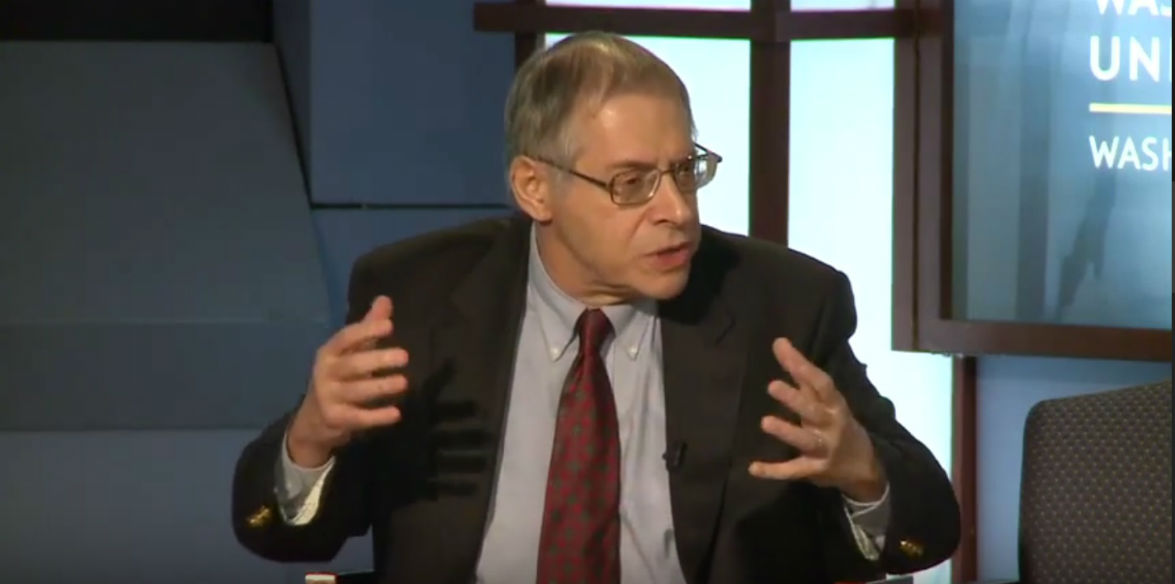Donald Trump has promised a $1 Trillion Infrastructure plan to create jobs, but has been vague about how that would be implemented. In an interesting post, Ellen Brown makes the argument that because the public private partnerships that so far been suggested won’t add new net spending to the economy it cannot create jobs. She ends her post saying:
A revolutionary movement needs a revolutionary financial system. If everything is on the table, as Steven Mnuchin says, the Trump team could consider funding its trillion dollar infrastructure plan with newly-issued credit, whether created by the Treasury or the central bank or through government credit lines with commercial banks. An Andrew Jackson-style president could avoid adding to the national debt altogether, by simply issuing an executive order to the Treasury to mint a trillion dollar coin. As shown in earlier articles here and here, this could be done without the need for congressional approval and without triggering hyperinflation.
I’ll offer some comments on this and related issues.
First, there’s a big difference between funding the infrastructure through using newly bank-created money, and getting it funded through government deficit spending facilitated by minting platinum coins. Banks create deposits when they lend money to contractors who trade their promises to repay in return for that money. That process does at least two things. 1) It leaves a private sector liability for the borrowers, and net new money as an asset for them; so the new money asset is matched by a new liability. And 2) the more net new money is spent on debt — funded infrastructure, the larger the bubble of private sector debt that is created.
On the other hand, when the infrastructure gets built using government deficit spending facilitated by minting platinum coins then net new money is created in the private sector without corresponding private sector debt, and no matter how much money is spent, there is no debt bubble for the private sector.
To put this another way, borrowing money from banks creates net new money for the economy, but not net new financial assets for the private sector. On the other hand, getting the net new money from Federal deficit spending facilitated by Treasury issuing platinum coins results in net new money and new net financial assets for the private sector.
Second, both Donald Trump and Bernie Sanders before him have proposed infrastructure spending that is roughly one-fourth the size of what the American Society of Civil Engineers estimates is the amount needed to close the gap between existing infrastructure and what is needed. This is well-known, but, somehow, in the excitement generated by the only two major party candidates who proposed at least moderately serious spending on infrastructure in many, many years; the media, and most commentators, seem to have forgotten both the size of the needed spending, and how far short of the need both the Trump and Sanders proposals are.
So, third, If one really wants to do what we need, then Ellen Brown’s proposal that the new president could solve the problem “. . . by simply issuing an executive order to the Treasury to mint a trillion dollar coin” doesn’t quite do the trick. That coin, or set of coins as the case may be, will probably need a face value more like $4.2 Trillion, then $1 Trillion.
And one final thought, Can we please get away from that stupid $1 Trillion dollar coin marketing meme? It has served its purpose of making the point that the Treasury Department has legal authorization from Congress to mint platinum coins whose choice of face value is up to the Secretary alone.
Once that idea is accepted, then it follows that the size of the coin can be any denomination at all, even $100 Trillion and beyond. But why mint a $100 Trillion coin?
The answer is that to do so would demonstrate to the public at large that the Federal Government 1) can never run out of money, as has been falsely claimed or implied by so many over the past three decades; 2) has all the money in the Treasury it needs to repay the “national debt” as it falls due without issuing any more government debt instruments; and 3) has enough electronic credits in its accounts to deficit spend into the private sector for many years to come. These three points, ought to make it clear that federal deficit spending never presents a bonafide problem of public finance, but always presents a political problem of getting Congress to appropriate the spending needing to fulfill public purpose.
So, we need to keep our eye on that ball! And we must never let political fraudsters distract us with the sophistry that the federal government is like your own household writ large. It is not! If the right things can’t get done that is never about lack of money. It always about Congress and the Executive not being willing to do them! Hold them accountable! Vote them out! No excuses! Just results!
